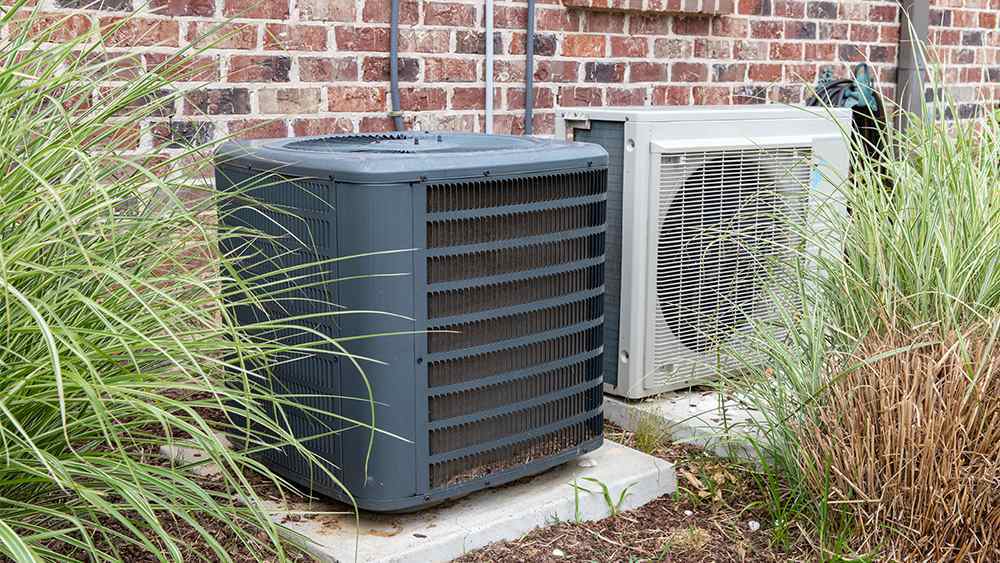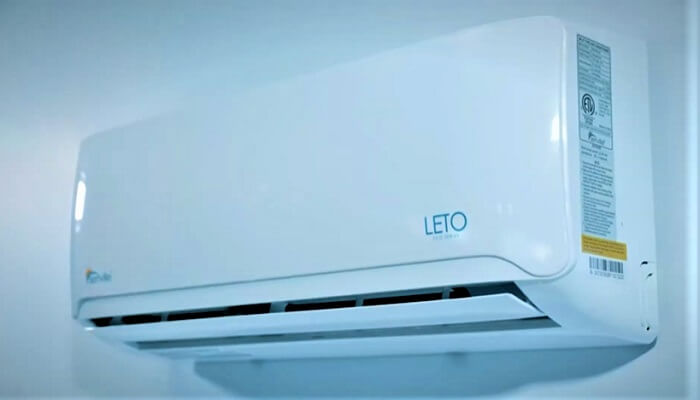| Note: This article may contain affiliate links, which means if you make a purchase following our links won’t cost you extra, but we may earn a commission. Learn more |
One of the best things about heat pumps is that they are very reliable. If you are looking for an efficient and cost-effective way to heat and cool your home, a heat pump may be the right choice for you. Heat pumps are typically more energy-efficient than furnaces and air conditioners, and can save you money on your energy bills. In addition, heat pumps can provide both heating and cooling, making them a versatile option for year-round comfort.
However, like any mechanical system, they can break down and experience problems. Here are some of the most common heat pump problems and what you can do about them:
1) The outdoor unit is not running: This is the most common problem and is usually caused by a tripped circuit breaker or a blown fuse.
Simply reset the breaker or replace the fuse and the problem should be fixed. If this doesn’t work, then there may be an issue with the compressor itself.
2) The indoor unit is not blowing air: If the indoor unit isn’t blowing air, then there are several potential causes.
First, check to make sure that all registers are open and that there is nothing blocking the flow of air. Second, check to see if the filter needs to be replaced—a clogged filter will restrict airflow. Finally, if neither of those solutions works, then there may be a problem with the blower motor itself.
3) There is no heat: If your heat pump isn’t producing any heat, then first check to see if it is in “heating mode”—it may have accidentally been switched to “cooling mode” or “off”.
If it is in heating mode and still not producing heat, then there could be an issue with low refrigerant levels or a faulty reversing valve.
4) There is no cool air: Just like with no heat if your heat pump isn’t cooling properly then first make sure it’s switched into cooling mode rather than heating mode or off altogether.
If your home relies on a heat pump for heating and cooling, you may be familiar with some of the common problems that can arise. While heat pumps are generally reliable, they are complex pieces of equipment and can sometimes malfunction. Here are some of the most common heat pump problems and what you can do about them:
1. Loss of power. If your heat pump suddenly stops working, the first thing to check is the power supply. Make sure the circuit breaker is not tripped and that there is no loose wiring.
If everything looks normal, then the problem may be with the compressor or another internal component.
2. Low output. If your heat pump is running but not producing enough heat or cool air, it could be due to a clogged filter or restricted airflow.
Check these things first and clean or replace them as needed. It’s also possible that the refrigerant levels are low, in which case you’ll need to call a professional for service.
3. Frozen coils. This is one of the most common heat pump problems during winter operations. It happens when moisture in the air freezes on the outdoor coil, causing it to become covered in ice. This restricts airflow and prevents proper heat transfer from taking place.
To fix this problem, simply turn off the unit and let the ice melt (you can speed up this process by using a hairdryer). Once thawed, clean any debris from the coils and make sure there’s good airflow around them before turning the unit back on again.

Credit: www.cielowigle.com
What Would Cause a Heat Pump to Stop Working?
If your heat pump isn’t working, there are a number of possible causes. Here are some of the most common:
1. Thermostat Problems
If your heat pump is turned off or set too low, it won’t work. Check to make sure the thermostat is on and set to a temperature above the current room temperature.
2. Frozen Coils
If the coils on the outdoor unit of your heat pump freeze, it can prevent the heat pump from working properly. To thaw them out, turn off the power to the unit and use a garden hose to spray warm water over the coils until they’re thawed.
3. Clogged Air Filter
A clogged air filter can block airflow and cause your heat pump to overheat and shut down. Check your air filter and replace it if it’s dirty or clogged.
4. Refrigerant Leak
If there’s a leak in the refrigerant line, it can cause your heat pump to stop working altogether.
How Do I Know If Something is Wrong With My Heat Pump?
If your heat pump isn’t working properly, there are a few things you can check to see if something is wrong. First, check the thermostat to make sure it is set to heat mode and that the temperature is set correctly. Then, check the air filter and clean or replace it if necessary.
Next, check the outdoor unit to make sure there is nothing blocking the airflow. Finally, call a professional to have your heat pump serviced if you still can’t get it working properly.
Why is My Heat Pump Blowing Cold Air When the Heat is On?
If you have a heat pump and it’s blowing cold air when the heat is on, there are a few possible reasons why. One reason could be that the outdoor temperature is too cold for the heat pump to work effectively. Another possibility is that the reversing valve is not working properly, which prevents the refrigerant from flowing in the correct direction.
Lastly, there could be an issue with the compressor or another component of the system. If you’re not sure what’s causing your heat pump to blow cold air, it’s best to call a professional for help.

What is the Typical Lifespan of a Heat Pump?
A heat pump is a mechanical device that transfers heat from one area to another. It does this by moving a refrigerant through a series of coils in order to absorb and release heat. Heat pumps are commonly used in HVAC (heating, ventilation, and air conditioning) systems, but can also be used for other applications such as swimming pool heating and industrial process heating.
The typical lifespan of a heat pump is 20-25 years. However, this can vary depending on the type of heat pump, the quality of the unit, how well it is maintained, and the climate it is operated in.
For example, units that are exposed to extreme cold or hot temperatures will have a shorter lifespan than those that are not. Additionally, poor maintenance or lack of proper care can also shorten a heat pump’s lifespan.
How To Fix Common Problems You May Have With Your Heat Pump
Heat Pump Troubleshooting Chart
In the market for a heat pump? Choosing the right model for your home and climate is important, but so is understanding how to keep it running smoothly. This heat pump troubleshooting chart can help you identify and fix some common issues.
If your heat pump isn’t working at all, start by checking the thermostat to make sure it’s turned on. Then, check the breaker or fuse box to see if the unit has lost power. If neither of these is the problem, there may be an issue with the compressor or outdoor fan.
If your heat pump is blowing cold air, this could be due to a number of things. First, check the filter and clean or replace it if necessary. Next, check the evaporator coils to see if they’re frozen over – this can happen if there’s not enough airflow.
Finally, make sure that the outdoor unit isn’t obstructed by snow, leaves, or other debris.If your heat pump is making strange noises, this could also be due to a number of things. First, check for loose screws or bolts and tighten them up if necessary.
Next, listen for any rattling coming from inside the unit – this could indicate that something has come loose inside. Finally, check for any blockages in the exhaust pipe or vents.No matter what issue you’re experiencing with your heat pump, following this troubleshooting chart should help you get to the bottom of it quickly so you can get back to enjoying comfortable indoor temperatures!
Heat Pump Problems And Solutions
There are a few different types of heat pump problems that you may encounter. Below are some common issues and their solutions. If your heat pump is not working at all, the first thing you should check is the power supply.
Make sure that the unit is plugged in and receiving power. If it is, then check the fuse box or circuit breaker to see if there has been a power outage in your area. If your heat pump appears to be working but is not providing any heat, the most likely culprit is a dirty air filter.
A clogged air filter will restrict airflow and prevent the unit from operating properly. Replacing the air filter with a new one should solve this problem. Another possibility is that the thermostat might be set to “cool” instead of “heat.”
Be sure to check this setting before calling for service. If your heat pump is making strange noises, it could be due to an issue with the outdoor fan motor. This problem can usually be resolved by simply cleaning the fan blades with soapy water.
If this does not fix the issue, then you will need to call for professional repairs.
Water Source Heat Pump Troubleshooting
Water source heat pump troubleshooting can be a tricky process, but there are a few things you can do to make it easier. First, check the thermostat to make sure it is set to the correct temperature. If it is, then check the breaker box to see if the power is on.
Next, check the condenser coils to see if they are clean and free of debris. Finally, check the evaporator coils to see if they are frozen or clogged. If all of these things seem to be in order, then you may need to call a professional for help.
Conclusion
One of the most common problems with heat pumps is that they stop working properly during extreme weather conditions. This can be due to a number of factors, including low refrigerant levels, dirty coils, or a frozen evaporator coil. If your heat pump stops working during extreme weather, it’s important to call a professional for help.
Another common problem with heat pumps is that they don’t provide enough heat in winter. This can be caused by several factors, including incorrect sizing, poor installation, or insufficient insulation. If you’re having this problem, it’s important to have your heat pump checked by a professional to see if it needs to be replaced or repaired.
Featured image credit: www.youtube.com
